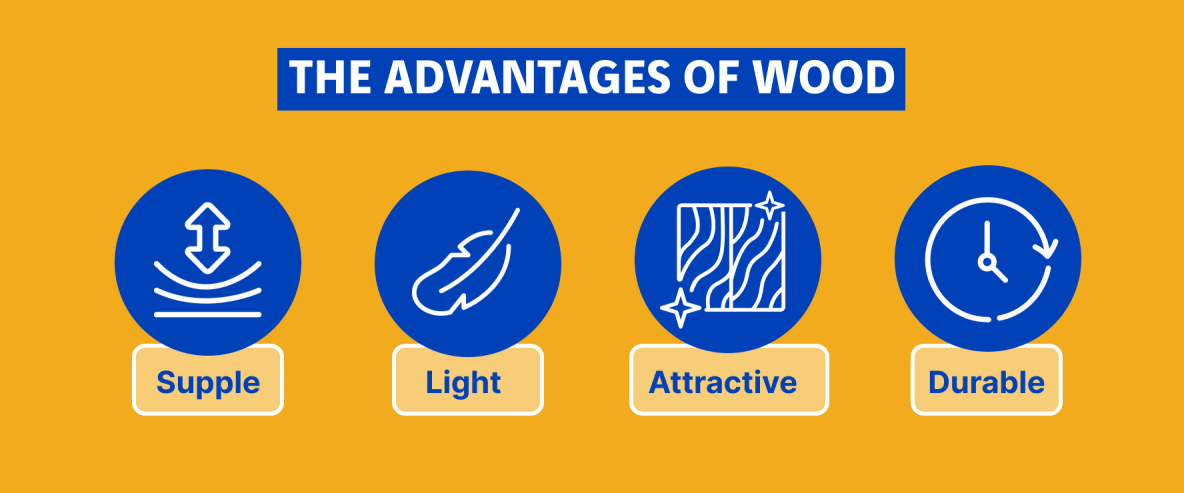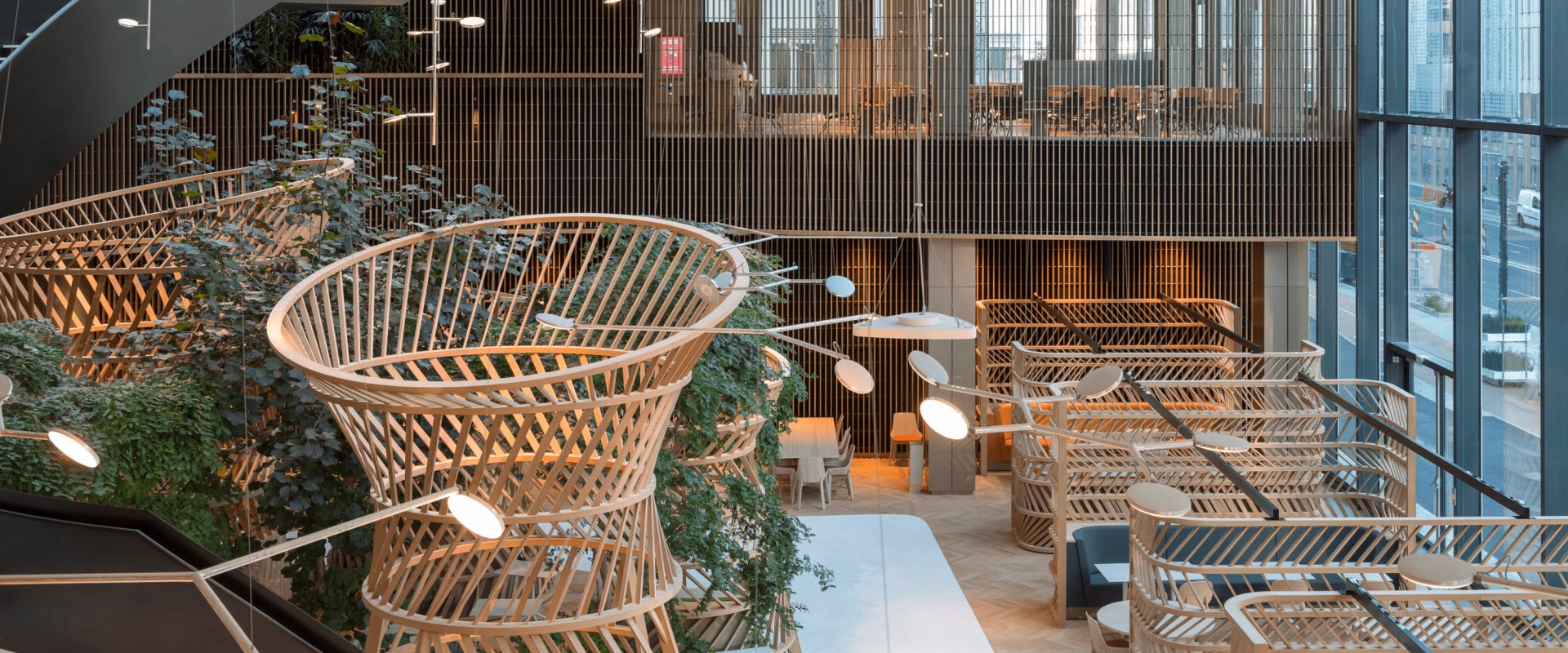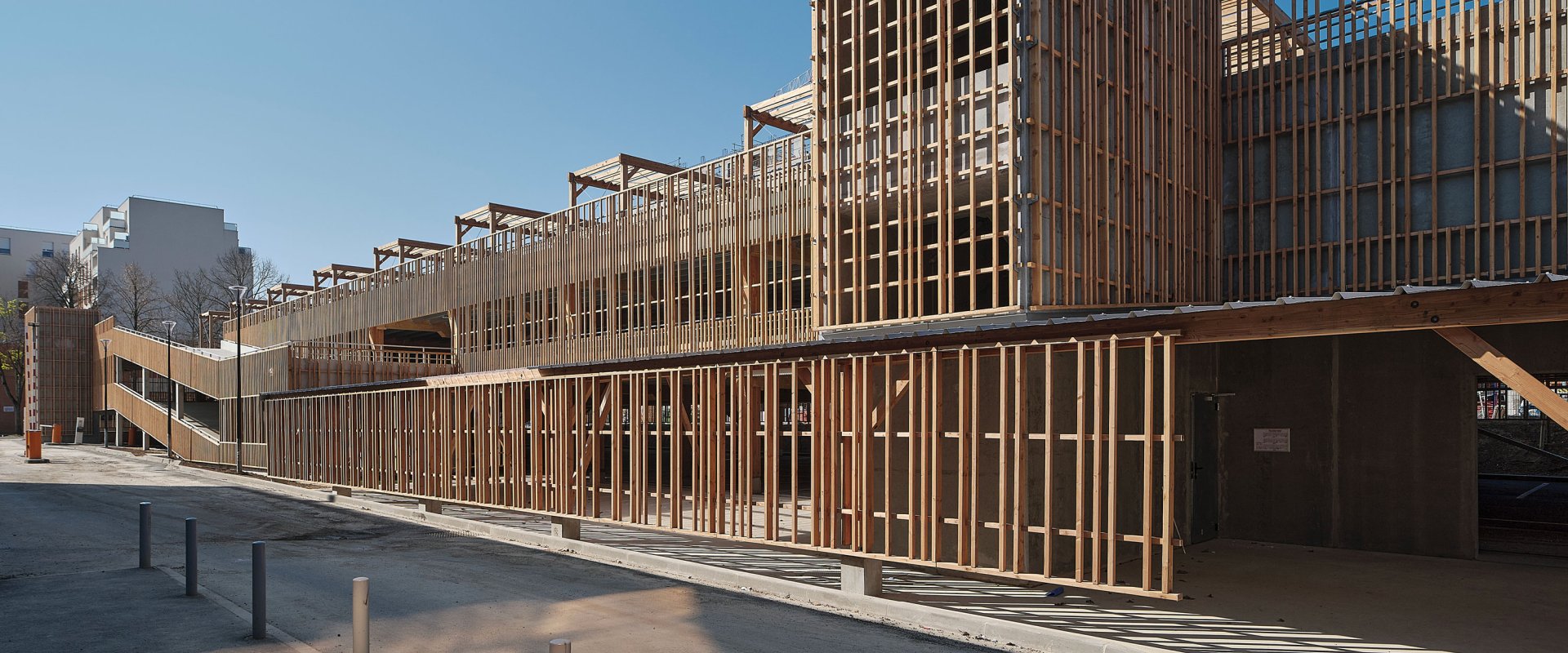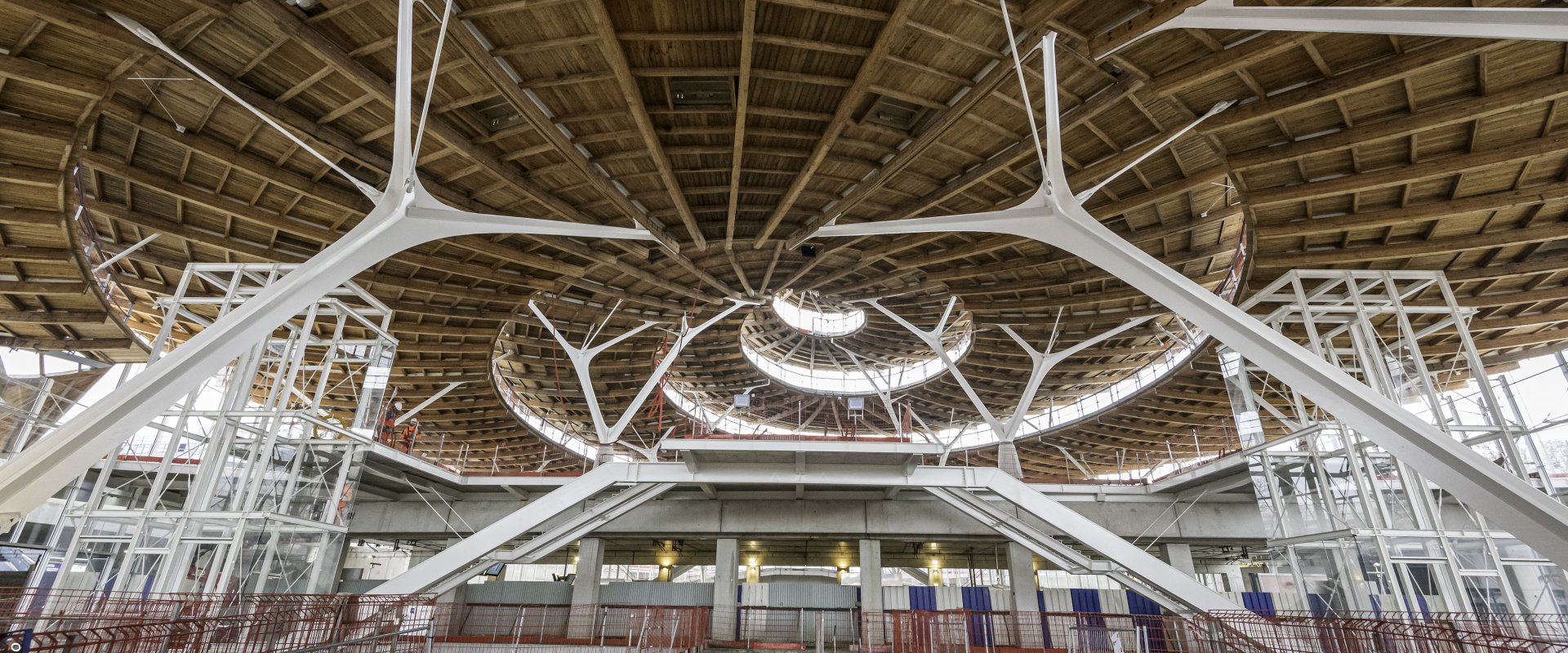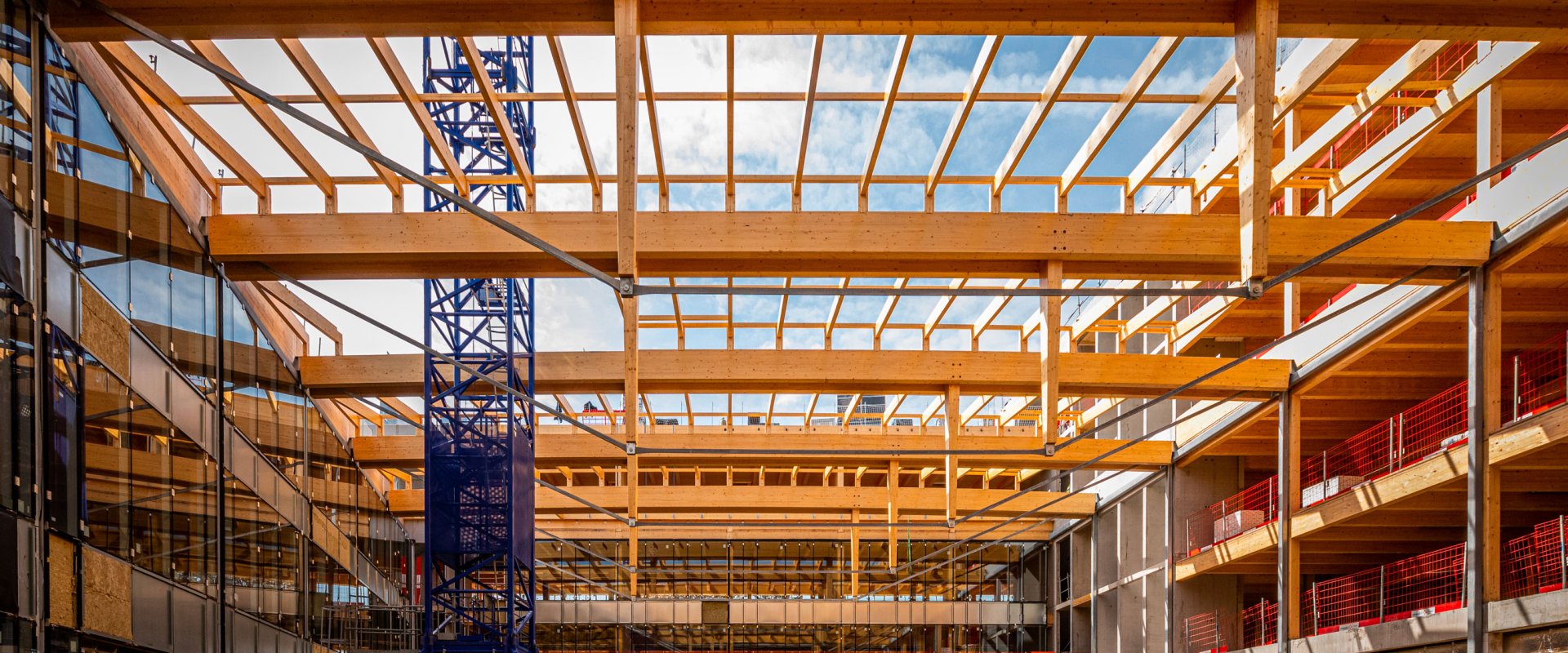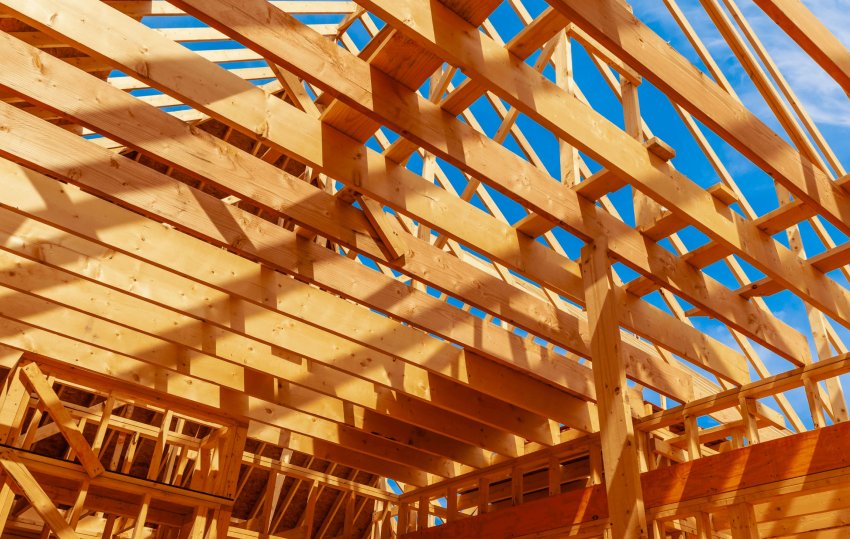
Wood, a strong building material, in more ways than one...
Today’s urgent environmental situation is raising new challenges for the construction sector, which must strike a balance between technical and ecological performance. Given this context, wood appears a strong material, in more ways than one... Let’s take a look at what it offers and its uses today and in the future.
Wood has long been used in small building projects and houses, but today it is gaining new status and becoming a serious contender to meet the challenges posed by the ecological transition. This vector of innovation, especially when combined with other materials, is opening up a remarkable field of opportunities for stakeholders in the construction industry.
Wood, a balance between technical and ecological performance
A high performance building material
Wood offers many advantages for the building sector. Sought after for its attractive appearance, it is also appreciated for it strength and durability. Valued as a material for a wide range of structures (high-rise buildings, raised structures, school buildings, tertiary sector buildings, logistics platforms, car parks, etc.), it has become an essential ingredient for a successful mixture. This mix of materials combines wood with concrete and steel, with each one being used where it provides optimal performance. Wood also provides excellent insulation and is therefore a logical choice in implementing the RE2020 environmental regulation, which came into force in January 2022. This regulation includes energy consumption and carbon impact in a building’s life-cycle assessment, calculated over 50 years.
Of course, wood also meets current architectural needs. Being supple and light, it is an ideal material for adding storeys to a building, building on fragile land, and creating modular, scalable structures.
A carbon-free building material
Wood is a 100% renewable raw material. It is also easy to recycle and to reuse to produce energy. It is increasingly becoming the material of the future given that French forestland is growing by 100 million m3 annually, with 50% of it being used for wood.
Another of wood’s assets is its carbon capture and storage ability (1 m3 of wood stores approximately 1 tonne of CO2). When it grows, wood filters carbon through photosynthesis and stores it. This phenomenon, knowns as carbon sequestration, reduces the amount of carbon dioxide in the atmosphere. When this wood is harvested and used, the CO2 it has captured is stored for the entire lifecycle of the structure that is built.
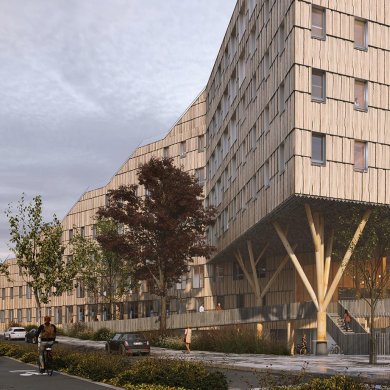
Wooden structures combine technical qualities with ecological ones. Such is the case, for example, with the Wood project, which recycles wood to reuse it in urban construction. Through this project, 6,447 m2 of office space was renovated and 450 m2 of green space was renatured on Grenoble's peninsula in the French department of Isère. Developed by VINCI Immobilier, this project is an excellent window on innovation in thermal comfort and energy efficiency.
Coordinating a responsible wood sector
Wood can only be a renewable raw material if, and only if, it is used responsibly. In France, over 90% of the wood used in construction comes from French and European forests, which are governed by sustainable management principles.
Nonetheless, the sector is shared by numerous stakeholders with sometimes diverging interests, which can be difficult to mutually satisfy in joint projects. As a result, local supply chains have been developed with a view to creating a circular economy.
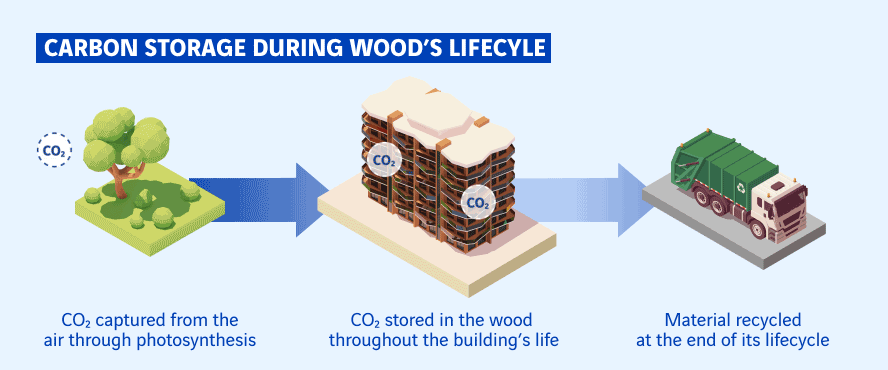
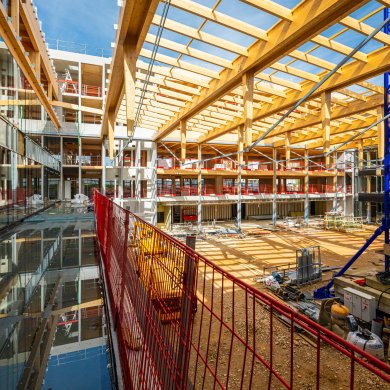
In France, Arbonis, a subsidiary of VINCI Construction, specialises in glued-laminated timber, which is very resistant, even to heat and fire, meaning it can be used in sophisticated building elements. The business unit mainly develops and promotes varieties from France, especially softwood species with excellent mechanical properties (maritime pine, Douglas fir, spruce, larch, etc.) that can be used together in mixed-material structures.
Innovating construction processes
Wood can even inspire innovation in construction processes. For instance, it can help old methods to re-emerge or be adapted, as was done by Toyota in the design of its ‘Woven City’ near Mount Fuji. The company based its design on “’Kigumi’, a centuries-old Japanese wood-joining technique.
Wood can also be used in completely new projects. The use of glued-laminated timber makes it possible to erect wooden structures to heights that would never have be considered previously. The current record is held by the Ascent tower in Milwaukee (USA), standing at 86.5 m!
In short, wood is the ideal material for building modular structures at competitively low prices. For example, the VINCI teams built two buildings combining wood and concrete for the athletes’ village as part of the Universeine project for the Paris 2024 Olympic & Paralympic Games.
Rethinking the complementarity of materials
Finding complementary materials is essential for builders. Combining wood, concrete and steel means the technical and ecological properties of buildings can be optimised.
Arbonis capitalises on this complementarity. One example is its construction of the low-carbon tertiary building, ‘NEW’, in Asnières-sur-Seine. This wood and concrete structure with a curved wood and metal frame, offering both technical and ecological performance, required different trades to work together.

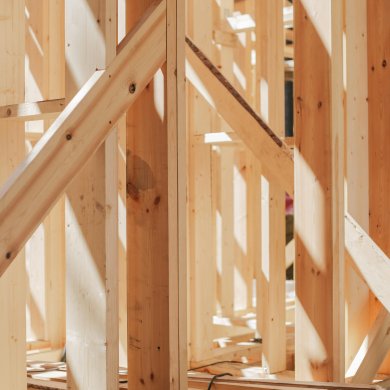
The wood of the future, which will help transform the construction sector, is being designed today. Stora Enso, a player in the global bioeconomy, as well as American company InventWood, are already in the race. In France, start-up Woodoo has developed a strong, technical, hybrid material from wood that’s capable of replacing glass, steel, and aluminium.
Copyright:
© Guillaume Mussau
© Nicolas Dohr
© Alexis Toureau
© Gérard Rollando / Société des grands projets
Most viewed
Explore more
Words from researchers: let's fight stereotypes!
Charlotte, a research fellow at École des Mines, and Erwan, a university professor and researcher at AgroParisTech, talk…
Fondation VINCI pour la Cité: opening the door to others is another way of reaching out!
With some 1.3 million organisations and 2 million employees, France can lay claim to a dynamic network of associations…
Sea water desalination: a solution for turning the tide on the water scarcity crisis?
As water shortages continue causing havoc in a growing number of regions around the world, an age-old idea is experiencing a…
